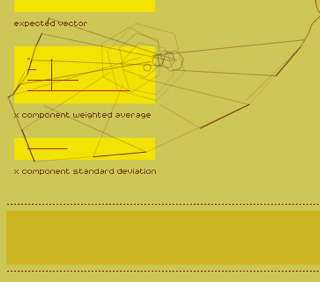Splash art originated in the 1940s in comics, where the term referred to a full page of visuals at the front of a book. Pages were designed to engage the reader's imagination along the lines of the comic's broader concept, while standing independent from the narrative. In the late 1990s, when the widespread use of the application Flash opened up new possibilities for animation and interactive media, the idea of the splash page migrated to web design. Online splash art brought visual excitement to a webpage when low modem speeds made it impractical to post large or moving images amid a site's textual content.
Rhizome introduced splash pages to its web site in 1998 in order to display artwork with greater immediacy....
Rhizome introduced splash pages to its web site in 1998 in order to display artwork with greater immediacy....
Launch Project 
 simple mouse position predictor with centipede parts, 1999
simple mouse position predictor with centipede parts, 1999
About
Lucas Kuzma's mouse-position predictor tracks the movement of the cursor across the screen and offers predictions about where it will go next. The site appropriates the language of science and statistics ("expected vector," "weighted average," "standard deviation") as it purports to predict the unpredictable: the next decision of a free, impulsive human being. Kuzma's splash page raises issues of free will and determinism, as well as surveillance and privacy, since it reminds us that every movement on the internet is recorded. It is representative of the artist's interest in generative systems and their potential to create organic action.
http://www.machinatus.net/
http://www.machinatus.net/